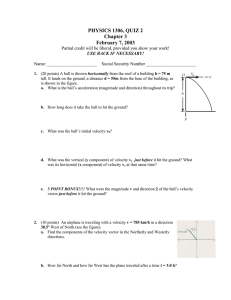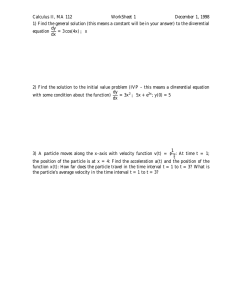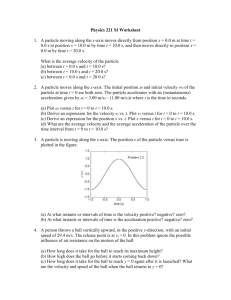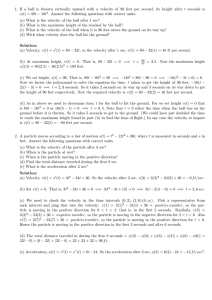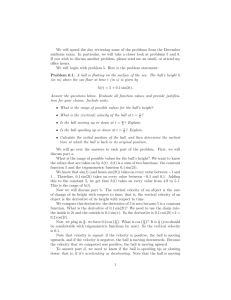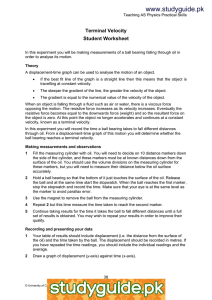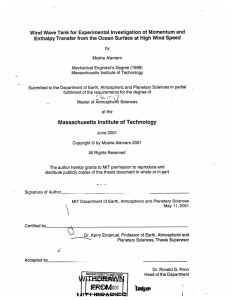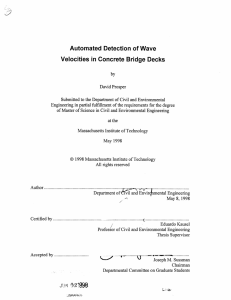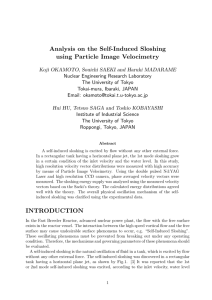Section 3.3: Rates of Change in the Natural and Social... − 9t
advertisement
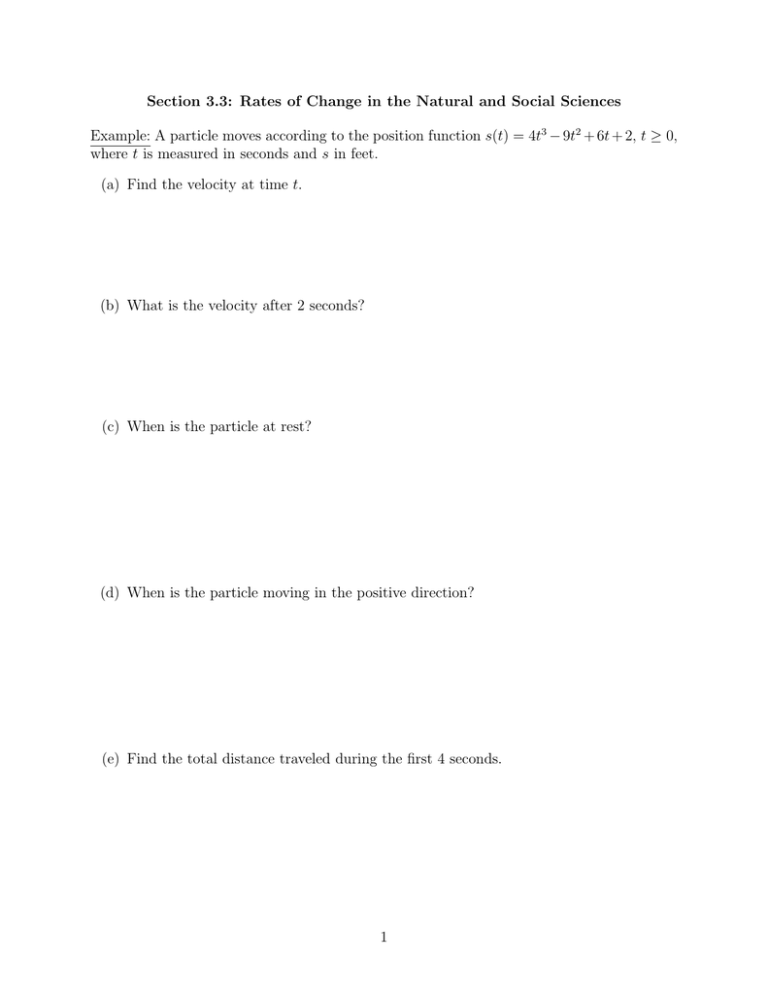
Section 3.3: Rates of Change in the Natural and Social Sciences Example: A particle moves according to the position function s(t) = 4t3 − 9t2 + 6t + 2, t ≥ 0, where t is measured in seconds and s in feet. (a) Find the velocity at time t. (b) What is the velocity after 2 seconds? (c) When is the particle at rest? (d) When is the particle moving in the positive direction? (e) Find the total distance traveled during the first 4 seconds. 1 Example: If a ball is thrown vertically upward with a velocity of 80 ft/s, then its height after t seconds is s(t) = 80t − 16t2 . (a) What is the maximum height reached by the ball? (b) What is the velocity of the ball when it is 96 ft above the ground on its way up? On its way down? (c) When will the ball hit the ground? (d) With what velocity does the ball hit the ground? 2 Example: A spherical balloon is being inflated. Find the rate of increase of the surface area with respect to the radius when r = 2 ft. Example: If a tank holds 5000 gallons of water, which drains from the bottom of the tank in 40 minutes, then Torricelli’s Law gives the volume V of water remaining in the tank after t minutes as 2 t V = 5000 1 − , 0 ≤ t ≤ 40. 40 Find the rate at which water is draining from the tank after 10 minutes. 3
